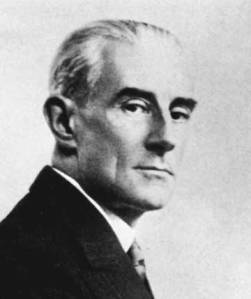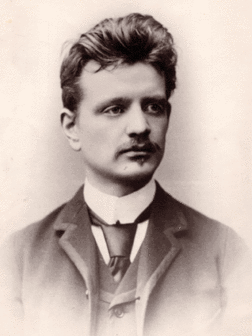Tagged: concerto
First Encounter: Johann Sebastian Bach
5 things to know about Johann Sebastian Bach and his music:

1. J.S. Bach (1685-1750)was a highly respected organist during his life time. However, after his death, his status as a composer only came into prominence in late 18th century and early 19th century, after his music was rediscovered and performed by German composer Felix Mendelssohn.
2. Many of his works are well-known to both musicians and non-musicians today, including Brandenburg Concertos, Mass in B minor, two books of Well-Tempered Clavier, Goldberg Variations, 6 Sonatas and Partitas for solo violin, Concerto for two violins in D Minor, and 6 Cello Suites (just to name a few)!
3. During his lifetime, J.S. Bach’s music was not as appreciated as his contemporaries. His music was considered to be old-fashioned, while his later, more complex writing style was considered “inaccessible.”
Nevertheless, composers Wolfgang Mozart and Ludwig van Beethoven, having access to J.S. Bach’s manuscripts, studied them carefully. After the revival of Bach’s music, Bach was recognised as the master of contrapuntal writing (where several melodies with independent rhythm and shape, but interdependent harmony, exist at the same time).
Composers such as Johannes Brahms, Robert Schumann, Frederic Chopin, Gustav Mahler, Paul Hindemith, Dmitri Shostakovich (and many more) acknowledged their respect of J.S. Bach and his influence on their works.
4. J.S. Bach was a very religious man, and his positions as the church organist and music director of Lutheran churches in various German cities significantly influenced his compositions. In addition, he also drew inspirations from court and dance music from France, Italy, and England.
5. J.S. Bach was born into a musical family. The Bach family produced over 50 noted musicians in the course of history! Three of J.S. Bach’s children became recognised composers: Carl Philipp Emanuel Bach, Johann Christian Bach, and Wilhelm Friedemann Bach.
Did you know?
1. The two great giants of Baroque music, J.S. Bach and George Frederic Handel, were born in the same year (only a few weeks apart) and within 80 miles of each other. However, although being very aware of each other’s presence and activities, their paths never crossed and they did not meet.
To find out more about Johann Sebastian Bach, visit http://www.jsbach.org
First Encounter: Jean Sibelius
5 things to know about Jean Sibelius and his music:
1. Today, the Finnish composer Jean Sibelius (1865-1957) is best known as an influential symphonist and nationalist composer. His works had considerable influence on other symphonists, especially in Britain and Nordic countries. Evocations of Sibelius-styled writing can be heard in certain works by composers such as Vaughan Williams, William Walton, and Malcolm Arnold.
2. In addition to his native homeland, his sources of musical influence include: Ferruccio Busoni, Anton Brukner, Pyotr Tchaikovsky, and Richard Wagner.
3. His most well-known works include: Finlandia, Violin Concerto in D minor, Valse Triste, Karelia Suite, and The Swan of Tuonela.
4. Sibelius’ output ranges from small character pieces to incidental music, music for freemasonry, and large-scale symphonic works!
5. Sibelius’ contemporaries include: Gustav Mahler, Carl Nielson, Richard Strauss, Claude Debussy, Erik Satie, and Ferruccio Busoni.
Did you know?
1. Sibelius was voted as the most popular composer, ahead of Beethoven and Ravel, in the 1935 poll by the New York Philharmonic.
1. Sibelius became a much-respected representative for Finnish national identity during his lifetime. At his funeral, 17,000 people were said to have filed past his coffin to pay respect. The students at Helsinki guarded the coffin all night, and people formed a guard of honour at the road side from Helsinki to Järvenpää.
To find out more about Jean Sibelius, visit http://www.sibelius.fi/english/
First Encounter: Maurice Ravel
5 things to know about monsieur Ravel and his music:

1. Although considered as one of the two great French Impressionist composer (alongside Claude Debussy), Ravel’s musical language was in fact unique, with individual compositions employing musical elements derived from influences that vary from 18th-century French music to jazz.
2. His sources of musical influence include: Gabriel Faure, Claude Debussy, Erik Satie, Richard Wagner, Russian music, Javanese gamelan, and jazz.
3. His most well-known works include: Bolero, Piano Concerto in G Major, Rapsodie Espagnole, Pavane pour une infante défunte, Ma mère l’oye, Jeux D’eau, and his orchestral arrangement of Modest Mussorgsky’s Pictures at an exhibition.
4. During his lifetime, Ravel knew the importance of recording his own works. Today, recordings of the composer performing his own works can be found on YouTube.
5. He is and was most well-known as a composer, transcriber, and orchestrator. However, Ravel was also a competent pianist and conductor.
Did you know?
1. Ravel was awarded a honorary doctorate by Oxford University in 1928.
2. He served as a truck driver during First World War.
To find out more about Maurice Ravel, visit http://www.maurice-ravel.net
